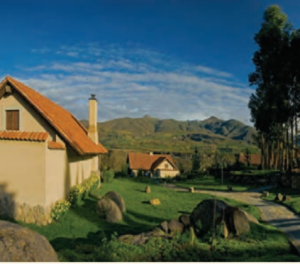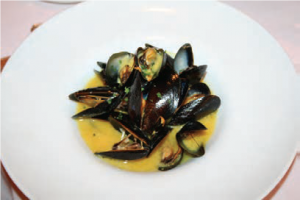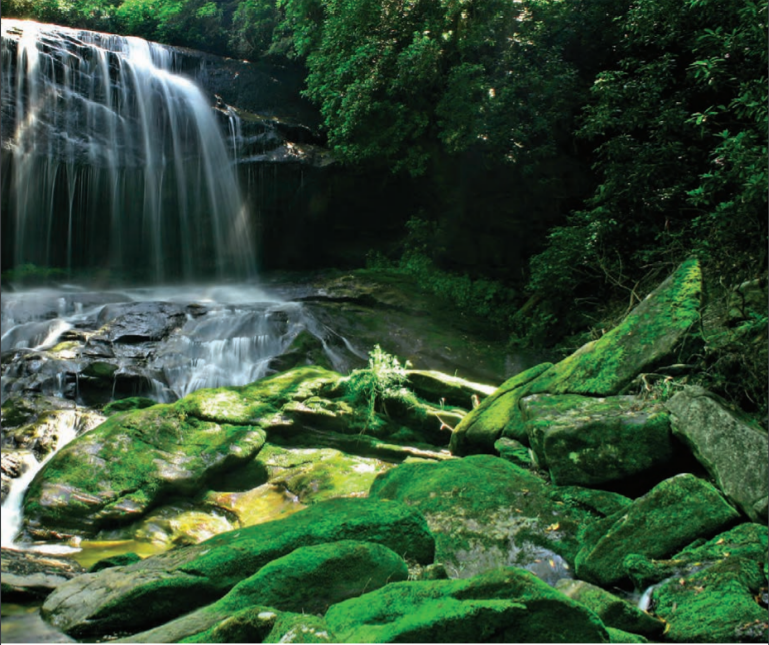Globetrotting microbes are keeping New Jersey doctors on their toes.
There are some souvenirs you want to bring back from your travels—local handicrafts, beautiful jewelry—and then there are the ones that you don’t. These range from the inconvenient
(Montezuma’s Revenge) to the catastrophic (raging infections). Thanks to ever-adventurous New Jerseyans and newcomers from developing countries, doctors in the Garden State often find themselves treating patients with unusual, challenging-to-diagnose, and even hard-to-cure diseases. By the time they arrive at Trinitas Regional Medical Center, their condition is typically dire. Sometimes, it’s desperate.
The rundown of rare diseases that doctors are currently fighting in New Jersey includes the tropical maladies with which world travelers are now familiar. Interestingly, these are showing up less frequently. Indeed, one would expect that the incidence of, say, typhoid, malaria, and dengue fever might be on the rise. But Dr. Clark Sherer, Chief of Infectious Diseases at Trinitas, says the number of cases of these tropical diseases has remained low for the 20 years he has worked in infectious diseases.
CONFRONTING THE “CLASSICS”
“We’re not seeing more than we’re used to—just a case or two of malaria a year, and a case of dengue fever every few years,” he says.
Dr. Sherer credits the availability of immunizations and preventative medicine with keeping the numbers small. “There are people who go out into the jungle for a week on tour and never get pills to prevent malaria,” he says. “But, if you take the proper precautions regarding vaccinations, food and water, and insect and mosquito control, you can stay healthy.”
When treating some of the rarer cases, like dengue fever and typhoid, the biggest challenge for doctors can be staying abreast of the latest treatments. “Since we see them infrequently, when we make the diagnosis, we have to
familiarize ourselves with any developments in treatment,” Dr. Sherer says. “You don’t feel quite as comfortable dealing with something you only see rarely.”
TB OR NOT TB
Tuberculosis is another disease that people associate with exotic locales. And recently, headlines about drug-resistant strains of TB may have struck fear in people’s hearts. Yet Dr. Sherer says that the incidence of drug-resistant TB is relatively low.
“Tuberculosis has been out there and is still out there, but most of the cases we’re seeing are completely sensitive to treatment,” he maintains.
While the number of cases of TB has grown, Dr. Sherer says there’s little need for the general public to worry. “Most of the cases we’re seeing here are in foreign-born people who are on the younger side. They were exposed in another country where TB is endemic, and later develop active TB.”
BAD BUGS
The most challenging cases the doctors are seeing involve bacterial infections, whether it’s unusual strains of mycobacteria brought back from a trip to a developing country or the homegrown variety of infections that are antibiotic-resistant.
Necrotizing fasciitis—a rapidly spreading infection that can kill off large swaths of soft tissue in a matter of hours— can be especially life-threatening.
“They have to be treated surgically immediately,” says Dr. Morteza Khaladj of The Center for Wound Healing and Hyperbaric Medicine. “We clean and drain the infection. Sometimes we have to remove the bone and large sections of soft tissue. Then patients are treated with IV antibiotics.”
The most troubling new infectious disease—methicillin-resistant Staphylococcus aureus (MRSA)— started right in our own backyard. MRSA began cropping up in hospitals as people with weakened immune systems began to develop
antibiotic-resistant staph infections in the skin, which often spread to surgical wounds, bones, and joints, and even into the major organs. This new strain of Staph infection has grown resistant to many antibiotics. Then a new strain developed—community-acquired MRSA—which can cause skin infections and pneumonia.
“Healthy people are coming into the hospital with overwhelming staph infections, very resistant strains of E. coli and other bacteria—some are resistant to all antibiotics,” Dr. Sherer says. “It’s a big concern—there are not many new antibiotics out there, so our resources are limited in treating some of these infections. MRSA has become a huge issue that we’re dealing with on a daily basis.”

So should you be worried? Most medical experts say that with the proper precautions, you can get through life safely, whether you’re jetting halfway around the world or driving to the local Wawa for a quart of milk.
“I don’t think the average person needs to be concerned,” Dr. Sherer says. “Just follow the CDC’s recommendations regarding the precautions you should take when you travel someplace where you might be at risk, and you should be fine.”
Ecotourism is all the rage. Even in a gray economy, most Americans say they would pay a premium to travel green. Saying and doing, however, can be two very different things.
With America’s green revolution in full swing, being a savvy traveler now means more than merely ferreting out five-star resorts and
three-star prices. For the globally conscious adventurer, the ideal vacation includes an environmentally sustainable destination and, even better, a rental car that runs on renewable fuels. A truly green traveler will encounter the pollution created by the round-trip flight by donating to solar power.
Limiting your planetary impact is a noble goal and worthy challenge. But just how realistic are these goals?
Good intentions aside, defining what constitutes a sustainable destination—and finding the right lodging or tour operator—can be daunting, especially for newcomers to ecotourism. The first hurdle is sorting out the legitimately environmentally conscious travel purveyors from the so-called “greenwashers,” or those companies promoting green credentials to attract customers, but which engage in little or no environmental protection. Fortunately, there are several information sources devoted to socially and environmentally sustainable travel, available online or in bookstores. Trip planners can use these and other resources to come up with a shortlist of potential resorts, hotels, or tour operators.
“These kinds of resources have made environmentally and socially responsible travel easier than people think,” says Martha Honey, President of the Center For Responsible Travel, a Washington, DC nonprofit. “While we’re not quite to the point of one-stop shopping, there is a wealth of information and it’s pretty accessible.”
When vetting hotels, guesthouses, or resorts, suggests Ronald Sanabria, Director of Sustainable Tourism for the Rainforest Alliance, check to see whether they have received environmental certification certificates from third-party organizations.
While there is no overarching international certifying agency, a growing number of countries, U.S. states, and international organizations review the environmental practices of resorts or operators and award certificates. Australia-based Green Globe 21—one of the best known—has certified over 700 properties and organizations worldwide. In searching for lodging in the U.S., look for a stamp from Energy Star, an EPA program that helps hotels and other companies reduce energy use. Many environmentally progressive countries—including Costa Rica, Ecuador, and Kenya— have strong certification programs. Here in America, about 25 state programs also offer certification.
Because resorts or tour operators with a strong environmental commitment are not always certified, it certainly doesn’t hurt to contact intriguing properties directly and inquire about their environmental policies. Try to determine in what ways they contribute to the sustainability of the surrounding community. Start with a few basic questions: How do you reduce waste? How do you conserve water usage? What chemicals do hotel staff use for cleaning or gardening? Do they hire local workers and use local products in the kitchen?
“The answers to these questions should give travelers a sense of the property’s commitment to sustainability,” Honey says. Offering guests the option of passing on towel or sheet changes is now considered the basic minimum environmental policy for hotels. More serious properties have gone further by switching to alternative energy sources or using organic produce in the kitchen.
After finding a suitable green resort or tour operator, some take steps to counter the air pollution created by their transportation. This is the eco-travelers carbon footprint— the amount of carbon dioxide pollution each person is responsible for producing by flying jet-fueled airplanes, driving car rentals, or taking any means of transport using fossil fuels. To help counterbalance the potential environmental impact, a growing number of carbon trading companies calculate how many carbons travelers burn, then collect funds from them and invest them in renewable energy resources to offset the damage.
What’s that compute to on, say, a flight from Newark Airport to Aruba? Climatecare, a UK outfit that specializes in helping travelers and companies offset the carbon pollution they cause, calculates that a couple will burn 1.38 tons of carbon emissions on this trip. The company will then collect the $20.40 needed to create an equivalent amount of clean energy. They invest the funds in wind power, biomass, or other renewable energy projects, usually in the developing world.
Now, if you can find a rental car that runs on electricity, you’ve accomplished something…namely a guilt-free eco escape!
Editor’s Note: Gary Lee won the Lowell Thomas Award for Travel Journalism for his coverage of 9/11 in The Washington Post. Fluent in five languages, including Russian, Gary served as the Post’s Moscow Bureau Chief. He was nominated for a Pulitzer Prize for his articles about Gorbachev’s Russia.
Starting Points
- INTERNATIONAL ECOTOURISM SOCIETY
(www.ecotourism.org) promotes sustainable tourism, offers a succinct definition of what ecotourism is about: responsible travel to nature areas that conserves the environment and improves the well-being of people. It also links to The Travel Green Guide, which includes tips, approved lodging, and tour operators. - THE RAINFOREST ALLIANCE has compiled a list of hundreds of environmentally responsible properties and operators worldwide. Log onto www.ecoindextourism.org.
- National Geographic Traveler’s ULTIMATE GUIDE TO SUSTAINABLE TRAVEL. Many country guides published by Lonely Planet include a GreenDex, a quick reference index of sustainable accommodations, and other eco-tips.
Three For Money


These luxury resorts come with impeccable eco-credentials…
Kanantik Reef & Jungle Resort

Set amidst 300 acres of jungle along the southern coast of Belize, this property is a luxurious haven in a sweep of exotic flora and fauna. Guests are housed in 25 Mayan huts with thatched roofs and hardwood floors. A member of the International Ecotourism Society, Kanantik is unflinchingly respectful of the surrounding ecology. No chemical sprays are used on the grounds. A special ecologically sensitive septic system handles waste, and refuse from the kitchen is composted. Meals are made with local organic products. Be advised—there is no shopping or nightlife nearby. But with jaguar-watching in the adjacent Cockscomb Basin, canoeing in the nearby uncharted rivers, 1,300 feet of beach just out the door, and excursions to the ancient Mayan ruins at Xunantunich, who needs modern distractions? The room rate includes meals and some excursions.
877-759-8834 • kanantik.com
Bardessono

Open less than a year, this 62-room Napa Valley property has already become the gold standard for luxury eco-hotels. The spare, low-rise buildings are constructed from walnut laurel bay and other wood salvaged from surrounding Northern California. Solar panels provide much of the electricity used on site. An elaborate system of underwater wells and pumps are used to heat and cool the guestrooms. No
plastic is used on property in order to minimize waste. The environmentally au courant management has even forgone rugs, to cut back on allergens. Bardessono’s Zen-inspired design does allow for creature comforts, including flat-screen televisions, 300-count organic linens, deluxe bath products, a gourmet restaurant, in-room spa treatments, and just about every other perk you’d expect from a five-star destination.
707-204-6000 • bardessono.com
Closer to Home

Just this January, Starwood launched its Element brand right here in the Garden State. The Element
Ewing Hotel is “flawlessly and certifiably state-of-the-art green” according to the property’s opening-day publicity. What exactly does that mean? From the naturally lit lobby to the guest rooms (which feature low-flow fixtures and stylish recycling bins), there is
an impressive balance of energy efficiency and topflight hotel amenities. Eco-friendly materials are used throughout the hotel, right down to the paint and carpeting and the housekeeping staff is armed with an arsenal of green cleaning products. 609-671-0050 • starwoodhotels.com/element.
La Casitas Del Colca


At the end of a dusty road in the rustic Colca valley of southern Peru, this collection of 20 cabins enables guests to experience rich, raw
nature and first-class service all at once. The structures, constructed of local Laja stone and other natural materials, blend seamlessly
into the pristine natural surroundings. Strongly committed to the protection of southern Peru’s delicate ecosystem, the hotel grounds
include an organic garden that supplies the kitchen with most of its fruits and vegetables. Las Casitas del Colca also composts organic waste for the garden and sends wastewater to a treatment plant for purity. The vegetable garden on the grounds is also used to provide produce for the nearby Mission of Sister Antonia soup kitchen. Guests are encouraged to volunteer at the mission. The major draw of the area is the Colca Canyon, located a short drive from the hotel. The 10,725-foot deep gorge offers a front-row seat for some serious condor-watching. That number is correct—it’s twice as deep as the Grand Canyon! The room rate includes all meals. 011-51-1-610-8300 •lascasitasdelcolca.com
According to the Mayan calendar, on December 21, 2012, the world will come to an end. Deep down, no one really buys into this apocalyptic vision. However, it would be nice to think that New Jersey is moving away from impending doom, rather than towards it. So, the question is: Are we?
When out-of-towners think of New Jersey, they tend to picture belching smokestacks, floating medical waste and other less-than-complimentary images. Unfair as that may be, the state does have a reputation for contributing more than its fair share to the world’s pollution problem. More and more, however, we hear that New Jersey is actually a leader in the Green Movement. Everyone, it seems—from cities to businesses to individual citizens—is focused on reducing our collective carbon footprint, protecting our precious resources and promoting sustainability. Granted, there is often a credibility gap between saying you’re green and putting your money where your mouth is. But as this snapshot of “where we are” shows, in many important (and surprising) ways, the Garden State really is living up to its name. Change is never easy, especially when it comes with a price tag. And make no mistake, the initial cost of going green can be steep. Yet slowly but surely, what was once a polarizing issue is becoming a foundational one. The poster child for environmental sustainability no longer sports a beard and sandals. More often than not, it’s a guy like Mike Kerwin. Kerwin is the CEO of the Somerset County Business Partnership and founder of the state’s first Energy Council. He has been at the forefront of leading the effort to make New Jersey green. Whether it’s convincing people to walk, bike, use mass transit, bring their own bags to the grocery store or reuse water bottles, he has been committed to teaching the masses how to live more environmentally friendly. Kerwin himself sees the change. Where he once found himself lecturing people on why it’s important to live green, he now spends a lot of time providing answers to inquisitive New Jerseyans on how to embrace a cleaner, healthier and more environmentally responsible lifestyle. While everyone is still watching their pennies these days, there is a general acceptance that the added cost (and effort) required to achieve these goals is worth it in the long run. “I definitely notice that younger people—starting with my own kids—seem to embrace it,” says Kerwin of going green. “I think it’s going to be a generational shift. I think ultimately there is going to be a demand for some lifestyle changes. And I think the older generation will follow suit. The case has been made that change has to be made.”

OLD DOGS, NEW TRICKS One of the most daunting obstacles to the greening of New Jersey is breaking old habits. The same person who dutifully recycles plastic bags or keeps their tires perfectly inflated may be completely resistant to a resource-preserving technology that simply rubs people the wrong way. Ted Carey knows all too well what it feels like to bump up against logic-defying behavior. His Hillsdale company, C&C Service, markets and installs LaundryPure, a device installed above the washing machine that uses the hydrogen contained in tap water to eliminate the need for hot water and laundry detergent. It saves money. It saves energy. It extends the life of clothing. And from a cost-to-benefit standpoint, the $450 LaundryPure amortizes itself in less than two years. You’d think by now every home would have one, and that Carey would be sipping Mai Tais on some beach overlooking a secluded tropical lagoon. There is just one problem.
“The promise that the unit makes is so great, that there is a natural skepticism,” he says. “Madison Avenue has indoctrinated us to believe that you need bleach and detergent in order to have clean clothes. And when something seems too good to be true, we have a tendency to move away from it.” “We need to give a unit to Oprah,” Carey laughs.

GRIP IT & RIP IT The verdant Hyatt Hills Golf Complex, situated on the borders of Clark and Cranford, was once a condemned brown site. Now it counts among its accolades the NJTA’s Environmental Stewardship Award. Hyatt Hills was reclaimed and transformed into a destination for golfers and their families, with first-rate teaching pros and fine dining.
CAR TALK Perhaps the ultimate test of our willingness to flip the switch on the status quo is the environmentally friendly automobile. America’s car culture is deeply embedded in New Jersey. Look around the next time you’re stuck at a stoplight. Almost everyone is driving something smelly, noisy, big—or some combination of the three. At what point will Garden Staters embrace hybrids like the Prius or Volt, or the batterypowered Leaf? (Note to Nissan: Real men may not drive a car called the Leaf.) The numbers are too premature to draw any lasting conclusions, but what does exist may raise a few eyebrows. Toyota dealerships like the one in Cherry Hill reported that they were having a hard time moving the Prius—and that was before the mother company’s PR nightmare. In 2008, New Jersey ranked 11th in hybrid vehicles sold, with 6,072, despite being the 9th-most populous state. According to the salespeople in Cherry Hill, the vast majority of New Jerseyans are still in love with their SUVs, and have a hard time with the concept of plugging in a car at night. The idea of not being able to go out and just start your car immediately is still viewed as a hassle versus a benefit. Not to mention that there are conversion steps the average home must undergo before it can support a hybrid vehicle.
GROWING PAINS We are what we eat. Countless studies support this old axiom. Although only a small percentage of fruit, vegetables and dairy grown in the Garden State is organic, that number has been rising dramatically as New Jersey consumers are becoming wise to the real cost of food grown with the help of chemicals, or trucked in from thousands of miles away. Business is booming at the state’s beloved produce stands, many of which feature organic goods. Meanwhile, the major grocery chains are devoting more and more space to these products. Some even have organic house brands. All told, sales of organic foods have seen double-digit percentage increases each year for more than a decade, with some years well over 20 percent. It’s a drop in the bucket, of course, but anything that heightens consumers’ awareness of the bigger environmental picture—especially in such personal terms—is a step in the right direction. Stephen McDonald would certainly agree. He founded Applegate Farms, a Bridgewater-based natural foods business, 22 years ago. Back then he and his peers seemed to be fighting a losing battle against that other McDonald’s. Today, Applegate Farms has grown from a niche market in the health-food category to mainstream markets all across the state. McDonald credits the growth of his business and others like it to the fact that New Jersey shoppers are making informed choices about what they feed their families—significantly more informed than even a decade ago. “When you walk into a store you want to understand how it was made, and what’s in it and what is not in it,” he explains, adding that “you can eat less and eat better, and it doesn’t have to cost you any more money. And it’s better for your diet. What excites us is that people are learning and becoming more engaged.”
LEARNED BEHAVIOR
Of course, a major component of changing our longterm relationship with the earth depends on setting a good example for our children. In this regard, New Jersey schools are getting with the plan. Most if not all of the major additions and renovations that have occurred in recent years have embraced some aspect of green sensibility. One of the early trend-setters was the Willow School in Peapack-Gladstone, built from the ground up in 2001. Most of the school was constructed with salvaged and recycled materials. From the wooden beams that hold up the walls to the stonework that graces the steps, much of the physical plant is experiencing a second coming of sorts. Solar pane ls have cut energy bills by as much as 70 percent, while rainwater is recycled in a filtering tank and stored for everything but drinking water. The school even has a lunchtime garden on-site. Head of School Kate Walsh is quick to point out an added benefit to going green: an enhanced learning environment. “There’s sort of a peaceful easiness in our classrooms,” she says. “We keep cool with a lot of natural air and natural light. We don’t have a lot of sickness. It’s a very healthy environment. There are no toxins, so the kids are basically healthy and the energy is really nice. What we teach our children is that they need to be responsible decision-makers as they live in the world.”

FINDING THE RIGHT MIX
Ultimately, the agent for green change in New Jersey will be a mix of common sense and economic survival. As Randall Solomon, Executive Director of the New Jersey Sustainable State Institute at Rutgers, points out, “We want to make sure the foundation of our economy and our standard of living is built on a stable foundation that will last into the future.” As for the Mayans, one might be tempted to say that they could have used a smart guy like Solomon to give them a heads-up when their society began crumbling. Then again, New Jersey might do well to take a hard look back at the lessons learned by that vanished civilization. There are some haunting parallels. Yes, we’ll make it past 2012 all right. But the next time you find yourself complaining about food and water shortages, skyrocketing fuel prices, overbuilding and overpopulation, it might be worth remembering that in responsible, proactive stewardship of the environment lies the key to the future of the state.
Editor’s Note: Zack Burgess is the Assignments Editor for EDGE. He decided to tackle this assignment himself—with assists from architect Bob Kellner and transportation Expert Josh Leinsdorf. For more information on the energySMART program call (866) NJ–SMART.
In 1974, when Alice Waters’s Chez Panisse was a toddler, a young chef named DENNIS FOY opened a restaurant some 3,000 miles from the mecca in Berkeley, California that was setting a new standard for dining in America. Located in Meyersville— thought of in those days as west of nowhere—the Tarragon Tree drew people curious about a way of cooking that was ingredient-focused, seasonal, and dependent on the nearest farmers. Technique was critical but, like Waters and her foraged-food menus, Foy couldn’t, and wouldn’t, write his bill of fare until he’d made the rounds of local farms.
Foy’s philosophy remained the same as he moved Tarragon Tree from Meyersville to Chatham, opened Les Delices in Whippany with his brother, John, and crossed the Hudson to Manhattan, where he widened his audience with Mondrian. There were other restaurants: Toto, Townsquare, casual Shore spots in Bay Head and Point Pleasant Beach, as well as EQ and Dennis Foy in New York, both in partnership
with his wife, Estella Quinones. He often shared his kitchen space, as well as his experience and passion for local fare, with novice chefs—who themselves made serious marks on American cuisine, including the top judge of “Top Chef,” Tom Colicchio, and James Beard Award winners Debbie Ponzek and Craig Shelton. Foy also kicked in his two cents as consulting chef on major restaurants in New Jersey.
Now, after heart surgery and recovery, after a successful series of gallery shows that put the chef’s paintings in the spotlight, Foy’s back full-time in New Jersey. He and Estella last fall bought and re-fashioned the former Lawrenceville Inn, christening it Dennis Foy. This year, the chef and painter added another job to his résumé: student. He’s taking classes at the University of Pennsylvania in Philadelphia. ANDREA CLURFELD caught up with him between kitchen shifts and classes
EDGE: For those who don’t know you are the granddaddy of modern American food in New Jersey, talk a bit about your early restaurants
DF: In 1974, when we opened Tarragon Tree in Meyersville, there was a farm nearby where we’d get eggs still warm. That’s what we did— go from this farm to that farm. When we moved Tarragon Tree to Chatham, we kept that focus. In 1978, I also did Les Delices with my brother. Tarragon Tree was a precursor, really, to any modern restaurant in America. Out of that, I built other restaurants that helped to change food in America. It was a great time. The people who came to the restaurants and came through the kitchens were some of the biggest names in food. Critics, chefs. A lot of menus today are written the way I started writing menus back in the 1970s, early 1980s.
EDGE: You gave Tom Colicchio, a Jersey boy, his big break.
DF: Tom was my sous chef at Mondrian. I hired him because I knew him, knew his potential. A lot was happening in those days; I was also opening Toto, in Summit. Still doing Tarragon Tree.
EDGE: And you were hiring Debbie Ponzek and Craig Shelton.
DF: Debbie Ponzek [later the Beard Award-winning chef at Montrachet in New York] did a stage at Tarragon Tree. I just
love her. She’s a great talent, a great person, a great chef. She learned everything, worked hard, and deserves every
bit of her success. Debbie will tell you I drilled her. But she learned how to run a kitchen and how to cook. Craig Shelton[former chef-owner of Ryland Inn, Whitehouse, and anotherBeard Award winner] was a gifted, talented chef. Very bright, well-educated. We all were committed to our belief systems and very devoted to doing it right. I have been very fortunate to always have had a great deal of talent around me.
EDGE: Today, the buzzwords in food are local, sustainable and organic. Does that seem old hat to you?
DF: What’s really wild is that I’m returning to my roots— to what I was doing at Tarragon Tree in 1974. Getting eggs warm from the nest. Finding berries in the woods. Having people bring us things—wild things, berries, mushrooms— because they see what we’re doing. We’ve come full circle. So that is nothing new to me. The seasonality of food always has to be second nature; it has to be a natural reaction. It’s funny to remember this now, but back then, the Frelinghuysen’s used to bring me beefsteak tomatoes from their gardens every summer. My customers just did that, back in Meyersville and Chatham.
EDGE: How are you bringing local farms to your table at Dennis Foy in Lawrenceville today?
DF: The new menu literally is designed to be farm-to-table food. We found a guy who has black honey. Great stuff. We showcase it. Right near us are three farms. Two orchards. I feel almost like I’m back in the pool I first dove into in 1974. I source a lot of my produce through Nature’s Reward, the produce market over on Bridge Avenue in Point Pleasant; I’ve worked with them for years, going back to my places in Bay Head and Point Pleasant. It’s the best. I’ll go out of my way to go there.
EDGE: Have farmers become savvier?
DF: I think they have. There are farmers with serious degrees in agriculture and animal husbandry. New Jersey has some of the top growers. I think that if people become more attuned to what’s happening, the concept of the small farm can be reinvented. You don’t need big spreads. Just the right crops. The bottom line is that the farm-to-table concept is good economy—for both sides.
EDGE: How does all this Jersey bounty influence your cooking?
DF: I buy every day. So it’s basic. Keep it simple, keep it color-coded, keep it organic. It’s like the Depression-era mothers who made the most of their gardens
EDGE: So you think this has legs, that there’s a future to local-sustainable-organic—for the home cook and for restaurants?
DF: Absolutely. Lately, I’ve been thinking a lot about how full circle this has come for me. I’m surprised, but not surprised to be realizing that everything old is new again. Look at it this way: If you have your own victory garden, you’re a step ahead. Having that food in your backyard will make you recalibrate your diet in a good way. That could be a big change. Frankly, I don’t think there’s much new that’s going to come down the road for restaurants. Gradual influences, not major changes. It’s great that so many different cultures are coming to America and adding ideas to menus
EDGE: What’s on the menu these days at Dennis Foy?
DF: I’m cooking more simply, but bringing out more flavor in my ingredients. I spent the past year recovering from
heart surgery. I ate fairly well, and I still eat well. But I’m more focused today. I’d love to have, say, two elements on a plate. Two absolutely pristine things. Sea scallops from Point Pleasant with a parsnip cream. Just a touch of a balsamic reduction. That’s it. Pristine, elegant. I’m not doing frou-frou food. I started getting ice cream, the best ice cream, from Jerry Reilly, who runs Halo Farm [in Mercer County]. I taste his ice cream and I’m totally blown away. I’ve been in New Jersey 35 years and I’m still discovering what’s here.
Editor’s Note: Dennis Foy is located at 2691 Main St., Lawrenceville. Telephone: 609. 219. 1900.

Photography by Nadine Raphael




“It is Didier now,” says the gentleman in the Hermes tie and dapper suit as he sands, head bowed slightly in our direction, at the foot of our corner table at Chez Catherine. “Not ‘Sir.’ No more. I am Didier.”
Even Didier Jouvenet’s admonishments can flatter. I’ve just addressed him as “Sir” in a quick series of queries at the end of our dinner, and the owner/maitre d’/sommelier of this intimate and pure French restaurant in Westfi eld is insisting on doing away with distance between diner and proprietor. That’s how the old restaurant pros do it, and the veteran of La Grenouille and The Carlyle Hotel in New York is nothing if not the consummate pro. Chez Catherine has been around a long time in its somewhat incongruous home in the bosom of a Best Western motel near the downtown district. But it’s been reinvigorated by the current stewardship of Didier Jouvenet and his wife, Edith. They have secured the services of chef de cuisine C.J. Reycraft to turn out the French classics. There are very few places in New Jersey where brandade de morue and confit of duck and profiteroles are done with textbook care.

If the foamists have their way, or if designer burgers snatch any more menu space—or if yet another Everything-Asian eatery takes hold in a strip mall—restaurants such as Chez Catherine could find themselves on the culinary endangered species list of New Jersey. We shouldn’t let that happen. The Jouvenets and their kitchen crew give us too much reason to let that happen. The dining room may be a touch too pretty-pink, a tad cluttered and close-quartered. Yet the dishes served forth are precise, heartfelt translations of those that once made France the culinary capital of the planet. They merit attention. Brandade de morue, a soul-satisfying mash of housecured salt cod, potatoes and roasted garlic, is given a lick of olive oil to help smooth it on accompanying toasts. If you’ve ever thought fondue was fun, well, Chez Catherine’s brandade offers the same communal dip-in pleasures, with a different and arguably more intriguing base. Risotto, as popular in parts of southern France as it is in northwestern Italy, is given a creamy lift with the addition of mascarpone, which balances the tannic shreds of spinach nicely. Is a shot of truffle oil overkill? Not in the hands of Reycraft, whose deft hand keeps this often-overused condiment in proper check. It’s background here, wisely elusive. But the foie gras is brawny and bold. A hunk of the stuff serves as the centerpiece of a plate with a rash of partners that allow you to enhance the fatty liver in various ways.

There are pert cubes of Grand Marnier gelee, slivers of toasted hazelnuts, a compote of vanilla-laced pineapple and a swirl of pink peppercorn-infused blood orange. No reason to be shy; lap it all up, for all of it works. Skate, splayed gloriously on a wide plate, showed the wing span of an eagle—and the sure hand of a kitchen willing to let an expertly cooked piece of fish stand just about on its own. A little acid from nibs of citrus was all that was needed. Duck confit, plucked from the annals of the classic bistros of southwestern France, didn’t miss either. This is the dish that defines falling-off-the-bone tender, and Chez Catherine’s rendition is the snapshot for a cookery bible. Factor in a scattering of tart, dried cherries for counterpoint, a pile of wild rice for texture and long-braised scallions for sweetness, and you have an air-tight case for respecting tradition. Chez Catherine’s kitchen also knows how to respect lamb. Fat rib-eye chops come cosseted by a chestnut puree and Brussels sprouts—an appropriately (and pleasantly) bitter sideshow to rich meat. The parade of classics doesn’t let up at dessert. How long has it been since you’ve had a proper profiterole? Here, your new best friend, Didier, will pour from a miniature gravy boat a ration of hot chocolate sauce over and around buttery puffs of pastry with an inner prize of vanilla ice cream. The original molten chocolate cake, done to death at chain restaurants everywhere? It’s here in true French fashion, fastidiously made so it tastes of fine dark chocolate, not something insidiously sweet, and served with a scoop of pomegranate ice cream. The best of the finales may have been the lemon tart, with a curd that resonates sour, spooned into a meringue shell and then set astride flecks of Marcona almonds, a thimbleful of lemon verbena-mascarpone sorbet and a flourish of blackberry sorbet. Mon dieu, do the French know balance, or what?

I do wish, however, that the wine list was better balanced. It weighs heavily in favor of the high-priced (way highpriced) standbys, while all but ignoring the highly nuanced, spirited small-producer bottles from the south of France that would sing with Reycraft’s food. If you’re willing to shell out three figures (or four), you can enjoy a solid Burgundy or Bordeaux. But the $60-to-$80 price range is far too thin, lacking in imagination and educational value, for the list to be considered worth a trip. But the food at Chez Catherine is. It makes me hope France’s life at New Jersey’s tables is long lived.
Dress for Dining Success
Gents, Chez Catherine is a place that doesn’t demand jacket and tie, but certainly deserves to be honored by appropriate attire. While a jacket alone will do, the same clothes worn to accomplish household chores will not. Ladies, workout wear is unsuitable here. This is a place where diners should feel inspired to rise to the occasion, even if that occasion is simply dinner out. Clothes worn to mow lawns and shuffle kids to soccer may do you fine at Applebee’s, but not at Chez Catherine. Will you see inappropriately dressed people dining here? Yes. It would be hard to imagine Didier Jouvenet and his crew treating them with any less respect than his properly dressed clients. It’s known as class. Watch and learn.
Editor’s Note: Andy Clurfeld is a former editor of Zagat New Jersey. The longtime food critic for the Asbury Park Press also has been published in Gourmet, Saveur and Town & Country, and on epicurious.com. Don’t miss her Q&A with celebrity chef Dennis Foy on page 40.







